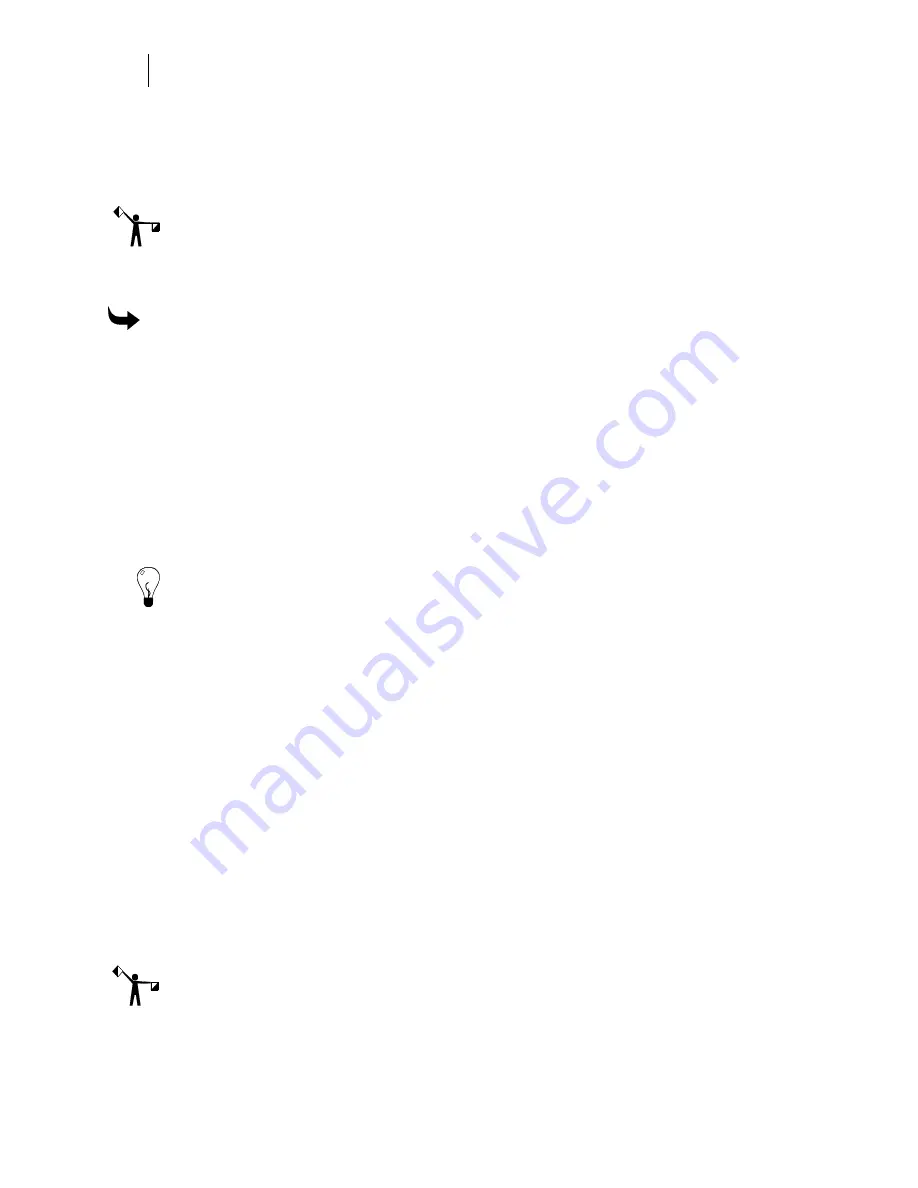
364
Chapter 32:
Converting Images to Cut Shapes
2
To increase the number of colors used in the image, drag the Number of Colors slider
in the Posterize Image to Vinyls dialog box toward More. Notice the number of colors
in the Vinyl Colors Chosen palette increases.
3
To update the image click Posterize to see the effect of the change.
Note: You cannot increase the number of Vinyl Colors Chosen beyond the original number of
Image Colors.
Viewing and editing the posterized image shapes
To view and edit the posterized image shapes
1
In Composer, select the original bitmap (Select > Images > All).
2
When the cursor changes to the Move tool, move the bitmap away from the posterized
shapes.
3
Use the Detail Edit tools to edit any of the posterized (cut) shapes.
Converting a black and white image to a cut shape
The Raster to Vector command creates cut lines around a black and white line art raster image.
Raster to Vector
cannot
process a color image. For color raster files use Tools > Posterize
Image/Color Raster to Vector.
Tip: If you select a black and white image and attempt to use Posterize Image/Color Raster to
Vector, Composer will automatically open Raster to Vector for monochrome images.
In the Raster to Vector dialog box you have two options:
♦
The Raster To Vector dialog box prompts you for
Speck Size in Pixels (to Remove)
and the Resolution. The range for the Speck Size to be removed is 0 to 50 pixels. Use a
small speck size, such as 3, for clean artwork. Use a larger speck size if the original has
many imperfections, but be aware that a very large speck size may remove details you
might want to keep.
♦
When selecting the
Resolution
, consider the following. Low resolution results in faster
screen redrawing. High resolution is the original image not scaled (all dots are shown
on the screen). It offers more accurate appearance of the results after the Raster to
Vector command, but it increases file size and slows down screen redrawing.
When cutting a design, shapes must be closed. If Raster to Vector processing results in open
shapes, use the detail editing tools to close them.
The resulting cut shapes can be color filled for printing on a GERBER thermal printer. In many
cases you may want to delete the original image from the design and then print and cut the
generated Raster to Vector shapes.
Note: Any image editing must be done prior to Raster to Vector processing. Editing of cut
shapes can be made after Raster to Vector processing.
Summary of Contents for OMEGA CP
Page 16: ......
Page 20: ......
Page 36: ......
Page 42: ...28 Chapter 4 Saving Files...
Page 44: ......
Page 68: ......
Page 92: ......
Page 96: ...82 Chapter 7 Selecting Elements of the Design...
Page 98: ......
Page 132: ......
Page 146: ......
Page 154: ......
Page 162: ......
Page 182: ......
Page 188: ......
Page 204: ......
Page 234: ......
Page 238: ......
Page 244: ......
Page 254: ...240 Chapter 22 Strokes Adding Print Thickness to the Outline of Objects...
Page 256: ......
Page 282: ......
Page 320: ......
Page 346: ......
Page 358: ......
Page 380: ......
Page 386: ......
Page 418: ......
Page 422: ......
Page 452: ......
Page 462: ......
Page 476: ......
Page 512: ...498 Chapter 44 Creating Special Effects...
Page 514: ......
Page 520: ......
Page 530: ......
Page 540: ......
Page 552: ......
Page 564: ......
Page 606: ......
Page 614: ...600 Chapter 51 Sending the Job to a Plotter or Printer...
Page 694: ......
Page 700: ......
Page 734: ......
Page 748: ......
Page 760: ...746...
Page 776: ......
Page 786: ......
Page 790: ......






























